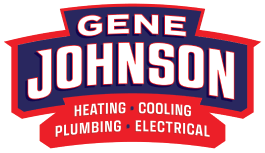Have you ever tried stepping into the shower only to be greeted by a sad, pathetic trickle of water? We’ve all been there – trying to rinse shampoo out of our hair under that weak, unsatisfying stream of water. Starting your day that way is just brutal.
If you’re a Seattle homeowner dealing with low shower pressure, you’re definitely not the only one. Our city’s aging plumbing infrastructure and water conservation efforts can really put a damper (pun intended) on getting that invigorating shower experience. But don’t just accept the drizzle! You can amp up that water pressure yourself using some of our DIY fixes and tricks!
We’ll walk you through easy methods that even a total plumbing novice can handle, including clearing out mineral buildup and adjusting valves. We’ll also give you the heads up on when it’s time to wave the white flag and call in professional reinforcements.
Because at the end of the day, you deserve to feel transported to a tropical rainforest – not stuck rinsing off under a leaky faucet. Let’s get that shower pressure cranked for the ultimate refreshing start to your day!

Common Causes of Low Shower Pressure in Seattle
Alright, before we dive into all the solutions for reviving that sad shower stream, we need to diagnose what’s actually causing the problem in the first place. Is it your home’s creaky old pipes throwing a temper tantrum? Are the city’s water restrictions affecting the flow? Let’s investigate the likely culprits.
Old Plumbing Systems
If you live in one of Seattle’s older homes, chances are your plumbing has seen better days. Those aging pipes can get gunked up with mineral deposits and corrosion over the decades, majorly restricting water flow. It’s like trying to drink a milkshake through a thin straw – just ain’t happening.
Seattle’s Water Supply and Regulations
Kudos to Seattle for being all eco-conscious with water conservation efforts. But, sometimes, those low-flow regulations can really lower your shower pressure. The city codes restrict just how much water can blast through at once to save those precious natural resources. So while your carbon footprint gets a little smaller, your shower experience suffers.
Leaky Pipes or Fixtures
Here’s something else that could be sapping your shower strength – leaks! Even a tiny crack or drip somewhere in your plumbing can significantly drop the water pressure at the showerhead. Be on the lookout for any suspicious wet spots, funky smells, or wildly fluctuating pressure as potential leak red flags.
Shower Head Issues
Speaking of showerheads, that could be the core issue too. Thanks to our mineral-rich Seattle water supply, those little nozzles get all gunked up with crusty buildup over time until water can barely trickle through. An older or low-flow showerhead model could also be the flow-rate bottleneck.
Water Heater Issues
While we’re brainstorming culprits, let’s not overlook that big ol’ water heater either. If the temperature and pressure settings are out of whack or there’s a bunch of sediment buildup inside, it can absolutely strangle your shower pressure down to a sad dribble.
So whether it’s decrepit plumbing, pesky regulations, sneaky leaks, shower head gunk, or an ornery water heater, there’s plenty working against you on the shower pressure front here in Seattle.
But don’t lose hope just yet! We’ve got all kinds of tricks up our sleeve for getting that invigorating flow back.
DIY Solutions to Improve Shower Water Pressure
Okay, now that we’ve identified some of the likely culprits behind your shower’s sad dribble, it’s time to take action! Don’t call the plumber just yet – there are actually quite a few simple DIY fixes you can try first to get that water pressure back up to a satisfying level. Let’s get our hands dirty!
Clean the Shower Head
One of the easiest things to start with is giving that showerhead a good deep cleaning. Thanks to our wonderful Seattle water supply, those nozzles get all gunked up with crusty mineral deposits over time until water can barely squeeze through. But have no fear – a little vinegar to the rescue!
Just unscrew the shower head, fill up a bowl with equal parts white vinegar and water, and let it soak for an hour or so. The vinegar will work its magic dissolving all that buildup. Use an old toothbrush to gently scrub away any stubborn residue, then reattach and enjoy those clear streams! Make this a regular maintenance routine to keep things flowing freely.
Check for Leaks
While you’re in plumbing investigation mode, keep an eye out for any sneaky leaks that could be sapping your shower pressure. Do a slow walk-through, checking pipe connections under sinks, around the water heater, behind shower tile – anywhere moisture has a chance to escape.
If you spot any drips or feel wetness, you may just need to tighten a loose fitting or replace an old washer to seal things up.
Remove Flow Restrictors
Here’s a little insider tip that could unlock a serious power shower: check if your shower head has one of those little flow restrictor devices installed. While designed to conserve water, they can really put a damper on pressure.
Simply unscrew the showerhead and use a pair of pliers to safely remove the restrictor – but be careful not to damage anything! However, it’s vital to be mindful of local water regulations and to ensure that you don’t exceed the legal flow limit.
Adjust the Water Heater
If you’re still not getting the powerful flow you crave, it could be an issue with the water heater itself. Some models have special valves that control temperature and pressure – and if they’re set too low, they’ll strangle your shower stream.
Check the heater’s manual for how to safely increase the pressure setting, but be cautious about mixing with hot temperatures.
Inspect the Main Water Valve
Last but not least, do a quick inspection of your home’s main water valve, usually located near the water meter. Ensure it’s fully open and not partially closed off, which could be restricting overall water flow throughout your pipes. While you’re at it, check for any visible blockages or mineral buildup around the valve that might need a quick cleaning.
Give those easy DIY tricks a shot before waving the white flag! With a little elbow grease (and maybe some vinegar wizardry), you may just reclaim that gloriously powerful shower experience you’ve been missing. But if all else fails, it might be time to call in professional reinforcements…
When to Call a Professional
You scrubbed that showerhead within an inch of its life, tightened every pipe connection, and even messed with the water heater settings. But no matter what DIY tricks you try, that shower pressure is still stuck in a pathetic dribble. What gives?
When DIY Solutions Don’t Cut It
If you’ve exhausted all the easy home remedies without any improvement, it’s probably time to hang up your wrench and call a professional plumber. As satisfying as it feels to play amateur fix-it person, some shower flow issues are just too complex for the average homeowner to solve on their own.
Older Seattle homes can hide all sorts of sneaky plumbing problems like hidden leaks, corroded pipes, or bad pressure regulators that require an expert eye.
When Pipes Need Replacing
One likely culprit could be your home’s aging pipes themselves. Those metal lines weren’t made to last forever, especially with our mineral-rich Seattle water causing buildup and corrosion over the decades.
When pipes get too old and damaged, no amount of drain cleaning will help – they’ll need to be properly replaced or repaired. Local plumbers have specialized equipment to reline or swap out problem pipes without tearing up your walls.
Pressure Regulator Woes
Here’s something else that could be the shower flow killer – does your home have one of those water pressure regulator valves installed? If it’s malfunctioning or set way too low, it’ll strangle your shower pressure no matter what other fixes you try. Having a pro diagnose and adjust those regulators is key to getting the pressure balanced right.
Heater Headaches
While you’ve got a plumber on-site, you might as well have them inspect that water heater too. Excessive sediment buildup, improper temperature settings, or just general aging/failure could all contribute to poor shower flow. They can flush the tank, repair or replace parts as needed – maybe even upgrade you to a fancy new tankless heater for continuous hot water!
The bottom line is, sometimes shower pressure woes are just too complex for a DIY home repair. When you’ve tried all the basic unclogging tricks without success, it’s time to call in trained professional help. Save yourself the headache and potential for causing bigger issues by leaving it to the pros.
Don’t Resign Yourself to a Sad Shower Stream
Enough is enough – no more pitiful drips and trickles when you just want to enjoy a refreshing shower. Whether you try some simple DIY hacks or call in reinforcements, it’s time to crank up that water pressure and bask in an invigorating deluge.
You don’t need to resign yourself to one more morning of hopelessly rinsing shampoo out under a weak stream. You can take matters into your own hands and restore that shower to its full refreshing glory by calling the local plumbing gurus at Gene Johnson (206) 792-7495.
Our experts will diagnose and demolish whatever’s behind your low pressure problem. We will have your shower pressure cranked up to maximum refreshing levels in no time. Say goodbye to subpar shower dissatisfaction for good!





